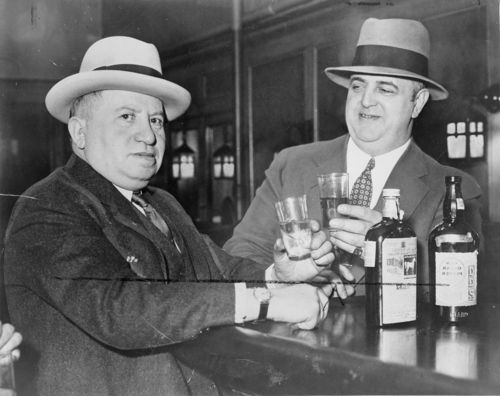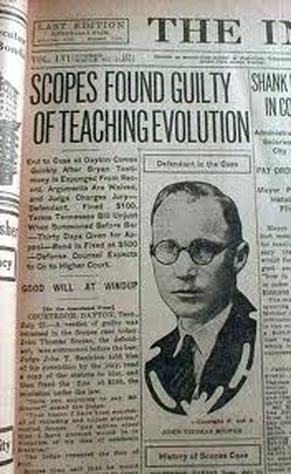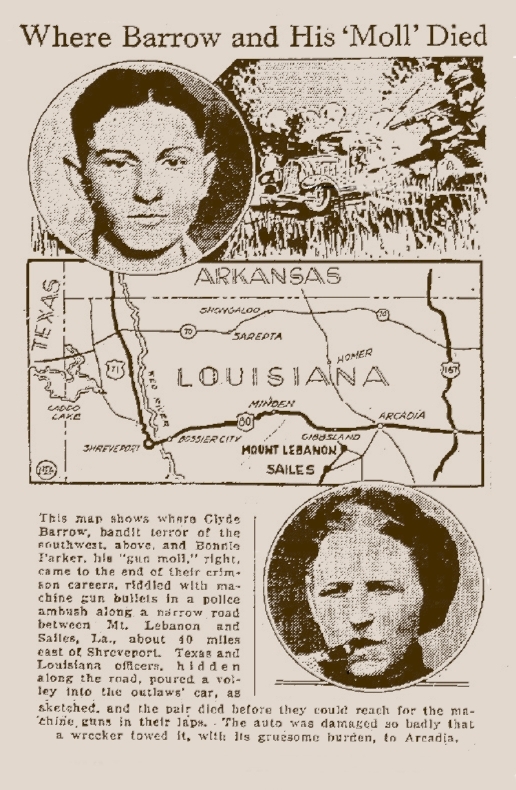The Locked Room
Rare cases of demonic possession had happened in the United States, but they were not widely known until William Peter Blatty's bestselling 1971 book, The Exorcist. Blatty had heard about a case nearby while he was a student at Georgetown in Washington, DC. The real case was shrouded in misinformation, but the 13-year-old boy who inspired the book recovered and led a normal life. The demons, though, apparently lingered in the place where they were cast out of the boy, and the room was kept locked until the building was demolished.
When the movie opened in 1973 audiences were completely freaked out.
Edison's Attempted Electricide
The prolonged death of the first man to die in an electric chair in 1890 was shocking: a gruesome spectacle of a man at first not given enough juice to kill him and then so much that he smoked. Also shocking was the behavior of one of the great inventors of the age, Thomas Edison. He hoped to discredit AC (alternating current) power, backed by his rival George Westinghouse, in favor of DC (direct current), by associating it with death. Edison recommended its use for the execution. He also electrocuted animals for the press to show that AC power was dangerous. Not only was he wrong, but AC power had advantages that made it the industry standard.
Florida is one six states where a condemned prisoner can choose to die in the chair, and in 2015 inmate Wayne Doty has done so.
The New Jersey Exception
Beginning in 1776, women could vote in New Jersey. That is, if they were single and worth at least 50 pounds. It was not unusual for states to restrict voting to those with property. It was unusual to allow women the vote, so much so that some historians believed it a loophole, rather than the intent of the state. The law mentioned only "individuals," without reference to gender. But in 1797 New Jersey made the inclusion of women clear by using he or she in the language of the statue. For the very first time women were specifically allowed to vote.
In 1807, New Jersey took voting rights away from women and free blacks, but extended the right to poor white men.
Beyond the Blue and Gray
A volunteer marching off to the Civil War might don the blue uniform of the Union, or the grey of the Rebs, or he just might be in bright red pantaloons with a tasseled fez on his head. Before the war tales of the North African fighters, called Zouaves, inspired imitation by American militias. When war came, as many as 100 volunteer units on both sides of the conflict donned the distinctive gear. What set them apart was not just appearance, but also their light infantry drill.
Zouave units were so renowned for bravery that wearing the uniform became a reward.
Booze, Bands, and Balls
William Henry Harrison won the 1840 campaign for president using some new tactics, but giving out booze wasn't one of them. Nor was the word booze invented then, although the free whiskey from the E. C. Booz distillery surely helped popularize the term. The most innovative tactic of the campaign was its transformation of the wealthy Virginia aristocrat into a "log cabin" man. Harrison's cabin was more a mansion.
The Whig party sold the nation on Harrison using slogans, songs and stunts. One was to "keep the ball rolling" from Kentucky to Maryland.
The Genius of the Other Einstein
Isidor "Izzy" Einstein was the brains behind Izzy and Moe, prohibition agents who racked up almost 5,000 arrests in New York City during the first five years of prohibition. Izzy's genius lay in thinking up colorful scenarios the two would enact to gain entry into one of the 30,000 or so of the city's speakeasies. Their antics ended up being covered extensively in the press, and they became as beloved by the public as any prohibition agent was likely to get.
Only a government would fire people for being too good at their job, but that's what happened to Izzy and Moe when they were let go in 1925.
The Fashioning of a Fashion
Levi Strauss gets the credit for "inventing" blue jeans, but it was Jacob Davis who brought Strauss the idea to make a better pair of pants using metal rivets. The idea was sufficiently innovative to receive patent protection in 1873. A hundred years later, the western working class wear produced by Levi Strauss and Co. was everywhere. The durable blue trousers had become a symbol of the casual freedom of the post-war American lifestyle.
It was the 1950s when the popularity of blue denim really took off, spread by those American ambassadors, teenagers and movie stars. Bing Crosby wore a tuxedo made of the stuff in 1951 to show it could go anywhere.
The National Elixir
After the Civil War, Georgia pharmacist John S. Pemberton experimented with medicinal mixtures he hoped would provide an alternative to opiates. His own addiction to morphine, a result of his war service on the Confederate side, provided motivation. The exotic coca plant promised to deliver a cure. His first successful drink was coca mixed with wine, but in 1886 a new version with sugar syrup and carbonated water promised a more widespread appeal. Although Pemberton invented Coca-Cola, he had little to do with its success.
Federal agents seized a shipment of Coca-Cola in 1909 for violating the Pure Food and Drug Act for its dangerous ingredient: caffeine.
The Monkey Men
Until its repeal in 1967, a Tennessee law banned teaching evolution in school. In 1925, the "Scopes Monkey Trial" had decided the matter. The trial was a set-up from the start: a young teacher, John Scopes, had agreed to be accused of giving an evolution lesson in order to test the law. The contest riveted the press, who came to the small town of Dayton to watch the match between former presidential candidate William Jennings Bryan and the most famous defense attorney of the day, Clarence Darrow. Some believed no less than the modern world was at stake. Others thought the whole thing a publicity stunt.
For journalist H. L. Mencken, the trial was both. In a series for the Baltimore Sun, he was hardly impartial, firming supporting his friend Darrow against what he saw as narrow-minded rural fundamentalists.
No Man But the Undertaker
Clyde Barrow boasted that no man but the undertaker would ever get him. "Never go crooked. It's but for the love of a man that I have to die," Bonnie Barrow supposedly said to fellow gang member Henry Methvin two nights before she was killed. An ambush by six Texas Rangers put an end to the two year, five state criminal odyssey of Bonnie and Clyde on May 23 of 1934. With the nostalgic glamour of their outlaw status, it's easy to overlook the dozen who died at their hands.
Yet the tale did survive their demise. Gibsland, LA holds a yearly festival near where the couple died.









